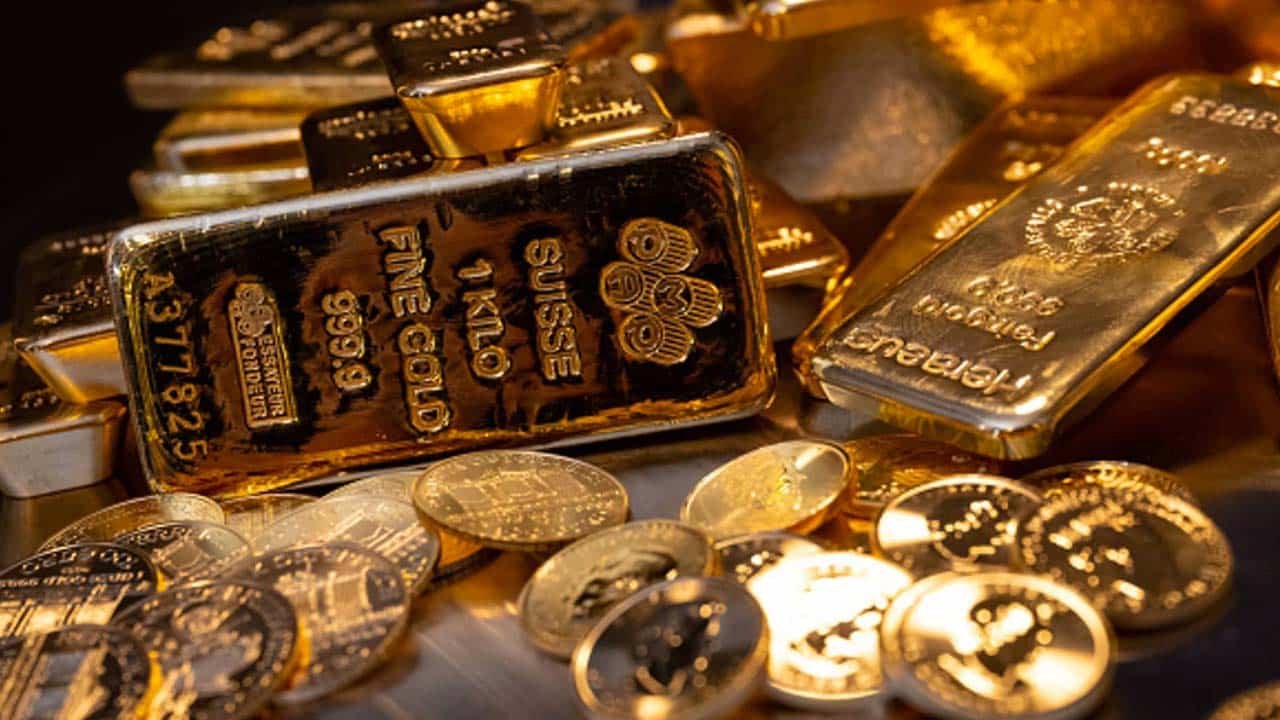Gold prices in Pakistan have soared to unprecedented levels, setting a new record on Friday as economic uncertainty continues to grip the nation. The price of 24-karat gold surged to Rs262,000 per tola, marking a modest increase of Rs200 from the previous session.
This climb, while seemingly incremental, is significant given the broader economic context and the ongoing fluctuations in both local and global markets.
Notably, market sources have reported that the current price is Rs2,000 below its actual market value, suggesting that the gold market is being cautiously managed to mitigate further spikes in prices.
Globally, gold prices have also been on the rise, reflecting broader economic trends and investor behaviour. Spot gold traded near $2,492 per ounce, showing a slight increase of $5.4 or 0.22 per cent from the previous day’s trading.
This uptick, although small, continues to underscore gold’s role as a safe haven for investors amid global economic uncertainty, particularly in light of inflationary pressures, geopolitical tensions, and fluctuating currencies.
In Pakistan, the gold market remains closely watched, especially by those concerned with the economic stability of the country. The Karachi Sarafa Association, a key body in setting gold prices, reported that the price of 24-karat gold has now reached Rs224,623 per 10 grams, a rise of Rs172.
Similarly, 22-karat gold was priced at Rs205,904 per 10 grams. These increases, while moderate, reflect the ongoing demand for gold as a hedge against economic instability and the weakening of the local currency.
Silver, another precious metal closely linked with gold in the commodities market, remained stable in the domestic market. The price of 24-karat silver was steady at Rs2,950 per tola and Rs2,529 per 10 grams.
The stability in silver prices, even as gold continues to rise, suggests a more nuanced market dynamic where silver is not experiencing the same level of demand pressures as gold.
Gold is becoming increasingly unaffordable for many individuals, reflecting broader economic pressures and rising commodity prices. As gold prices soar to unprecedented levels, with 24-karat gold now priced at Rs262,000 per tola in Pakistan, the precious metal is edging out of reach for the average consumer.
This dramatic increase, coupled with the high cost of living and inflationary pressures, means that gold, traditionally seen as a safe investment and a symbol of wealth, is no longer accessible to a significant portion of the population.
For many households, the escalating cost of gold makes it a luxury item rather than a feasible investment or gift.
This shift underscores a growing divide in economic access, as those with more substantial financial resources can continue to invest in and purchase gold, while the majority struggle to afford even small quantities. The impact of these soaring prices highlights the broader challenges facing consumers and the widening gap between wealth and affordability.
PKR shows slight improvement during early trade
On the currency front, the Pakistani rupee showed slight improvement against the US dollar during early trading hours on Friday, appreciating by 0.09 per cent.
The rupee was trading at 278.43 against the dollar at 10:00 AM, marking a gain of Re0.24 from the previous day’s close of 278.67, according to the State Bank of Pakistan (SBP). This minor recovery, while positive, does little to alleviate the concerns surrounding the rupee’s overall performance in recent months.
The rupee has been hovering between 277 and 279 against the dollar, reflecting the volatility in the currency market. This fluctuation is largely attributed to the broader economic challenges faced by Pakistan, including a significant current account deficit, inflationary pressures, and uncertainty surrounding international financial assistance.
Traders and analysts are closely watching the approval process for the International Monetary Fund’s (IMF) new $7 billion Extended Fund Facility, which is expected to provide much-needed relief to Pakistan’s economy.
Pakistan’s Finance Minister, Muhammad Aurangzeb, announced on Wednesday that the IMF Executive Board is scheduled to meet in September to discuss the country’s economic situation.
Aurangzeb indicated that “good progress” is being made with the IMF, and the upcoming meeting is crucial for securing the financial aid that Pakistan desperately needs. The IMF’s approval is seen as a key indicator of economic stability, and its delay has contributed to the rupee’s instability.
On the international stage, the US dollar remained stable on Friday, as traders awaited key remarks from Federal Reserve Chair Jerome Powell. Powell’s comments are expected to provide insight into the Federal Reserve’s future monetary policy, particularly in relation to interest rates.
Meanwhile, Bank of Japan (BOJ) Governor Kazuo Ueda sought to calm market nerves after a surprise rate hike last month, which had caused significant volatility in the markets.
The dollar index, which measures the greenback against six major currencies, remained relatively unchanged at 101.43 in early trading on Friday, after a 0.34 per cent rise in the previous session.
The index had dipped to 100.92 on Wednesday, marking its lowest point this year. The stability in the dollar comes amid mixed signals from the US economy, where inflation has begun to cool, but uncertainty remains about the strength of the labour market.
Federal Reserve policymakers, speaking on Thursday, largely supported the idea of the US beginning interest rate cuts next month. This shift in policy is seen as a response to the easing of inflationary pressures and the cooling of the labour market.
However, one policymaker indicated that there is no rush to ease monetary policy, suggesting that the Federal Reserve may take a cautious approach to avoid reigniting inflation.
As global and domestic markets continue to navigate through these uncertain times, both gold and the rupee will likely remain in focus. Investors and analysts will be watching closely to see how these trends develop, particularly as Pakistan continues to seek international financial assistance and as global economic conditions evolve.
The coming weeks will be critical in determining the direction of both the local economy and its currency, with the gold market acting as a barometer of economic sentiment.







